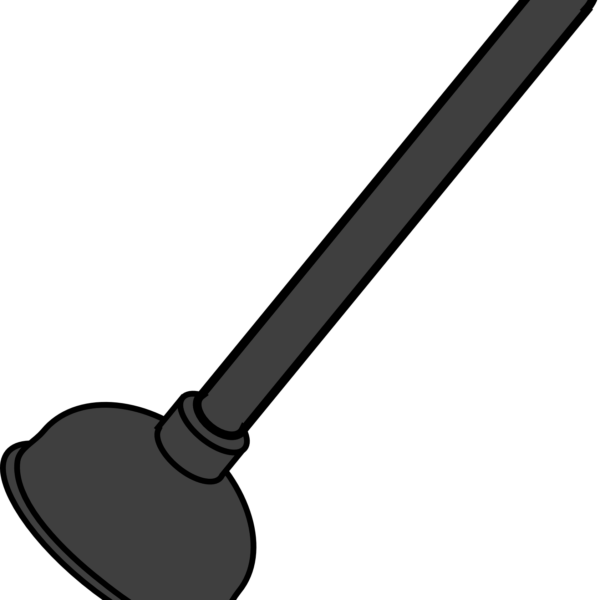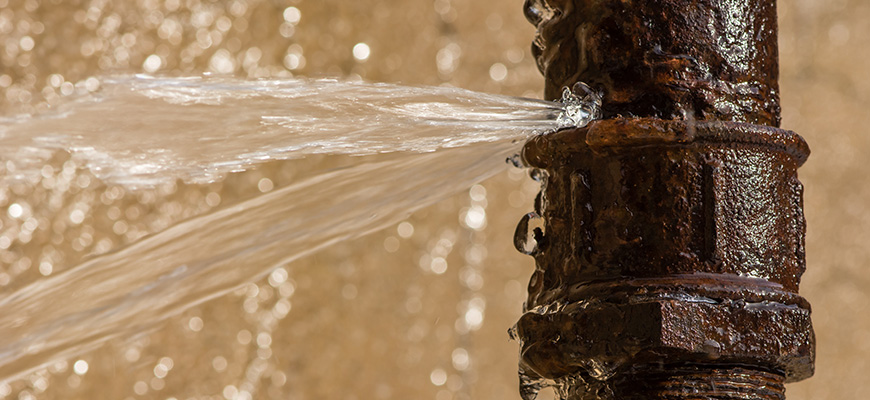Toilet blockages can be an unpleasant and frustrating experience for any homeowner. Whether it’s a result of excessive toilet paper usage or foreign objects accidentally flushed down the drain, a clogged toilet can disrupt your daily routine. Understanding the causes and solutions to toilet blockages is essential for maintaining a functional and hygienic bathroom.
Understanding the Importance of Using a Toilet Plunger
When faced with a toilet blockage, using a toilet plunger is one of the most effective and efficient methods to clear the obstruction. A toilet plunger is a specialized tool designed to create a vacuum and dislodge the blockage through suction and pressure. It consists of a rubber cup attached to a handle, allowing you to apply the necessary force to remove the clog.
Using a toilet plunger is not only cost-effective but also environmentally friendly compared to using harsh chemicals or calling a professional plumber. With the right technique and a little practice, anyone can master the art of toilet plunging and become self-sufficient in handling minor plumbing issues.
Types of Toilet Plungers and Their Uses
There are different types of toilet plungers available, each designed for specific purposes. The most common type is the cup plunger, which has a flat rubber cup suitable for use on flat surfaces like sinks and bathtubs. However, for toilet blockages, a flange plunger is the most effective option.
A flange plunger features an additional piece of rubber that extends from the cup. This flange fits perfectly into the toilet drain, creating a better seal and enhancing the plunging action. The flange plunger is specifically designed for toilets and provides the necessary force to clear stubborn blockages effectively.
Step-by-Step Guide to Using a Toilet Plunger Effectively
Toilet plunging may seem straightforward, but using the correct technique is crucial for optimal results. Follow these step-by-step instructions to effectively use a toilet plunger:
- Prepare the area: Before you begin plunging, make sure to protect the surrounding area by placing old towels or newspapers on the floor. This will prevent any potential water splashes or spills.
- Create a seal: Position the plunger over the toilet drain, ensuring the flange is inserted into the bowl. Press down gently to create a seal between the plunger and the drain.
- Apply pressure: Push the plunger down firmly, then pull up quickly without breaking the seal. Repeat this motion several times, gradually increasing the force with each plunge. The suction and pressure created will help dislodge the blockage.
- Check for clearance: After several plunges, remove the plunger and check if the water starts to drain. If not, continue plunging until the blockage is cleared. Be patient and persistent, as it may take a few attempts to fully remove the obstruction.
- Clean up: Once the blockage is cleared, flush the toilet to ensure proper drainage. Clean the plunger thoroughly with warm water and disinfectant before storing it in a dry place.
By following these steps, you can effectively use a toilet plunger to clear most toilet blockages and restore proper functionality to your bathroom.
Tips for Preventing Toilet Blockages
Prevention is always better than cure when it comes to toilet blockages. Here are some useful tips to minimize the risk of encountering a clogged toilet:
- Mindful flushing: Only flush toilet paper and human waste down the toilet. Avoid flushing feminine hygiene products, paper towels, wet wipes, or any other non-biodegradable items.
- Proper toilet paper usage: Use an appropriate amount of toilet paper to avoid excessive buildup. Teach children the right amount to use and discourage them from playing with toilet paper.
- Regular maintenance: Conduct regular maintenance by pouring hot water down the toilet drain once a week. This will help prevent the accumulation of debris and keep the pipes clear.
- Install a drain guard: Consider installing a drain guard or screen over the toilet drain to catch any foreign objects that may accidentally fall in. This will prevent larger blockages and make cleaning easier.
By implementing these preventive measures, you can significantly reduce the chances of encountering a toilet blockage and the need for frequent plunging.
Common Mistakes to Avoid While Plunging a Toilet
Although using a toilet plunger is a relatively simple process, there are some common mistakes that people often make. Avoiding these mistakes will ensure a more effective and hassle-free plunging experience:
- Using the wrong plunger: As mentioned earlier, using a flange plunger specifically designed for toilets is crucial for optimal results. Using a cup plunger or any other type may not create a proper seal and hinder the plunging action.
- Insufficient water in the bowl: Before plunging, make sure there is enough water in the toilet bowl to cover the rubber cup of the plunger. If there is not enough water, add some to create a seal and enhance the suction.
- Plunging too aggressively: While it is important to apply sufficient force, plunging too aggressively may cause water splashes or damage to the toilet bowl. Start with gentle but firm plunges and gradually increase the force if needed.
- Neglecting proper hygiene: Always remember to wear gloves and practice good hygiene when handling a toilet plunger. After each use, clean and disinfect the plunger thoroughly to prevent the spread of bacteria or germs.
Avoiding these common mistakes will ensure a smoother and more successful plunging experience, saving you time, effort, and potential damage to your toilet.
Alternative Methods for Clearing Toilet Blockages
While a toilet plunger is usually the go-to tool for clearing toilet blockages, there are alternative methods you can try if the plunger fails to resolve the issue:
- Hot water and dish soap: Pour a mixture of hot water and dish soap into the toilet bowl and let it sit for a few minutes. The heat and soap may help break down the blockage, making it easier to flush away.
- Baking soda and vinegar: Create a mixture of baking soda and vinegar and pour it into the toilet bowl. The chemical reaction between the two ingredients can help dissolve the blockage. Let it sit for a few hours or overnight before flushing.
- Plumbing snake or auger: If the blockage is located deeper in the pipes and cannot be reached with a plunger, consider using a plumbing snake or auger. Insert the snake into the toilet drain and rotate it to dislodge the obstruction.
Always exercise caution when attempting alternative methods, as some may not be suitable for all types of blockages or plumbing systems. If in doubt, it is best to consult a professional plumber.
When to Call a Professional Plumber
While most toilet blockages can be resolved with a plunger or alternative methods, there are instances when it is best to seek professional help. Consider calling a professional plumber in the following situations:
- Recurring blockages: If you frequently experience toilet blockages despite your best efforts, there may be an underlying issue with your plumbing system. A professional plumber can identify and address the root cause of the problem.
- Multiple clogged fixtures: If multiple fixtures in your home, such as sinks, showers, or tubs, are experiencing drainage issues along with the toilet, it could indicate a larger plumbing problem. A professional plumber can assess the situation and provide appropriate solutions.
- Sewage backup: If sewage starts backing up into your toilet or other fixtures, it is a clear indication of a serious blockage or sewer line issue. This requires immediate attention from a professional to prevent further damage or health hazards.
Remember, attempting to tackle complex plumbing issues without the necessary expertise can lead to further damage or costly repairs. It is always prudent to consult a professional plumber when in doubt.
Best Practices for Maintaining a Clog-Free Toilet
Prevention is key when it comes to maintaining a clog-free toilet. By following these best practices, you can minimize the risk of encountering frequent toilet blockages:
- Regular cleaning: Clean your toilet regularly to remove any build-up or residue that may contribute to blockages. Use a toilet brush and an eco-friendly cleaner to keep the bowl clean and prevent debris from accumulating.
- Educate household members: Teach everyone in your household about proper toilet usage and what can and cannot be flushed down the toilet. Encourage them to be mindful of their actions to prevent unnecessary blockages.
- Install a water-saving toilet: Consider upgrading to a water-saving toilet with a dual-flush system. These toilets use less water per flush, reducing the risk of clogs and conserving water in the process.
- Schedule professional maintenance: Regularly schedule professional plumbing maintenance to inspect your pipes, drains, and sewer lines. A professional plumber can identify any potential issues before they escalate into major blockages.
By adopting these best practices, you can maintain a clog-free toilet and enjoy a hassle-free bathroom experience.
Conclusion: Mastering the Art of Toilet Plunging
Toilet blockages can be a nuisance, but with the right knowledge and tools, you can become a master of toilet plunging. Understanding the importance of using a toilet plunger, knowing the different types of plungers, and following the step-by-step guide will empower you to tackle most toilet blockages effectively.
Remember to also implement preventive measures to minimize the risk of encountering clogs in the first place. By practicing proper toilet usage, avoiding common plunging mistakes, and following best practices for maintenance, you can keep your toilet functioning smoothly.
However, in more complex situations or recurring blockages, it is always wise to seek the expertise of a professional plumber. They have the necessary training and tools to handle more challenging plumbing issues.
By mastering the art of toilet plunging and adopting preventive measures, you can ensure a clog-free and hygienic bathroom environment for yourself and your family.


